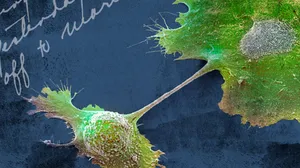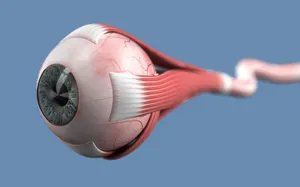Cancer causes cells to divide uncontrollably. This can result in tumors, damage to the immune system, and other impairment that can be fatal.
In the United States, an estimated 15.5 millionTrusted Source
people with a history of cancer were living as of January 1, 2016, according to a 2018 report from the American Cancer Society.
In this article, we examine types of cancer, how the disease develops, and the many treatments that help improve the quality of life and survival rates.
What is cancer?
Photo edited by Stephen Kelly; Science Photo Library – STEVE GSCHMEISSNER/ CSA Images/Getty Images
Cancer is a broad term. It describes the disease that results when cellular changes cause the uncontrolled growth and division of cells.
Some types of cancer cause rapid cell growth, while others cause cells to grow and divide at a slower rate.
Certain forms of cancer result in visible growths called tumors, while others, such as leukemia, do not.
Most of the body’s cells have specific functions and fixed lifespans. While it may sound like a bad thing, cell death is part of a natural and beneficial phenomenon called apoptosis.
A cell receives instructions to die so that the body can replace it with a newer cell that functions better. Cancerous cells lack the components that instruct them to stop dividing and to die.
As a result, they build up in the body, using oxygen and nutrients that would usually nourish other cells. Cancerous cells can form tumors, impair the immune system and cause other changes that prevent the body from functioning regularly.
Cancerous cells may appear in one area, then spread via the lymph nodes. These are clusters of immune cells located throughout the body.
Causes
There are many causes of cancer, and some are preventable.
For example, over 480,000 peopleTrusted Source
die in the U.S. each year from smoking cigarettes, according to data reported in 2014.
In addition to smoking, risk factors for cancer include:
- heavy alcohol consumption
- excess body weight
- physical inactivity
- poor nutrition
Other causes of cancer are not preventable. Currently, the most significant unpreventable risk factor is age. According to the American Cancer Society, doctors in the U.S. diagnose 87 percentTrusted Source
of cancer cases in people ages 50 years or older.
Is cancer genetic?
Genetic factors can contribute to the development of cancer.
A person’s genetic code tells their cells when to divide and expire. Changes in the genes can lead to faulty instructions, and cancer can result.
Genes also influence the cells’ production of proteins, and proteins carry many of the instructions for cellular growth and division.
Some genes change proteins that would usually repair damaged cells. This can lead to cancer. If a parent has these genes, they may pass on the altered instructions to their offspring.
Some genetic changes occur after birth, and factors such as smoking and sun exposure can increase the risk.
Other changes that can result in cancer take place in the chemical signals that determine how the body deploys, or “expresses” specific genes.
Finally, a person can inherit a predisposition for a type of cancer. A doctor may refer to this as having a hereditary cancer syndrome. Inherited genetic mutations significantly contribute to the development of 5–10 percentTrusted Source
of cancer cases.
Treatments

Share on Pinterest
The side effects of chemotherapy include hair loss. However, advances in treatment are improving the outlook for people with cancer.
Innovative research has fueled the development of new medications and treatment technologies.
Doctors usually prescribe treatments based on the type of cancer, its stage at diagnosis, and the person’s overall health.
Below are examples of approaches to cancer treatment:
- Chemotherapy aims to kill cancerous cells with medications that target rapidly dividing cells. The drugs can also help shrink tumors, but the side effects can be severe.
- Hormone therapy involves taking medications that change how certain hormones work or interfere with the body’s ability to produce them. When hormones play a significant role, as with prostate and breast cancers, this is a common approach.
- Immunotherapy uses medications and other treatments to boost the immune system and encourage it to fight cancerous cells. Two examples of these treatments are checkpoint inhibitors and adoptive cell transfer.
- Precision medicine, or personalized medicine, is a newer, developing approach. It involves using genetic testing to determine the best treatments for a person’s particular presentation of cancer. Researchers have yet to show that it can effectively treat all types of cancer, however.
- Radiation therapy uses high-dose radiation to kill cancerous cells. Also, a doctor may recommend using radiation to shrink a tumor before surgery or reduce tumor-related symptoms.
- Stem cell transplant can be especially beneficial for people with blood-related cancers, such as leukemia or lymphoma. It involves removing cells, such as red or white blood cells, that chemotherapy or radiation has destroyed. Lab technicians then strengthen the cells and put them back into the body.
- Surgery is often a part of a treatment plan when a person has a cancerous tumor. Also, a surgeon may remove lymph nodes to reduce or prevent the disease’s spread.
- Targeted therapies perform functions within cancerous cells to prevent them from multiplying. They can also boost the immune system. Two examples of these therapies are small-molecule drugs and monoclonal antibodies.
Doctors will often employ more than one type of treatment to maximize effectiveness.
Types

Share on Pinterest
Smoking increases the risk of many different types of cancer.
The most common typeTrusted Source
of cancer in the U.S. is breast cancer, followed by lung and prostate cancers, according to the National Cancer Institute, which excluded nonmelanoma skin cancers from these findings.
Each year, more than 40,000 people in the country receive a diagnosis of one of the following types of cancer:
- bladder
- colon and rectal
- endometrial
- kidney
- leukemia
- liver
- melanoma
- non-Hodgkin’s lymphoma
- pancreatic
- thyroid
Other forms are less common. According to the National Cancer Institute, there are over 100 typesTrusted Source
of cancer.
Cancer development and cell division
Doctors classify cancer by:
- its location in the body
- the tissues that it forms in
For example, sarcomas develop in bones or soft tissues, while carcinomas form in cells that cover internal or external surfaces in the body. Basal cell carcinomas develop in the skin, while adenocarcinomas can form in the breast.
When cancerous cells spread to other parts of the body, the medical term for this is metastasis.
A person can also have more than one type of cancer at a time.
To discover more evidence-based information and resources for cancer, visit our dedicated hub.
Outlook
Improvements in cancer detection, increased awareness of the risks of smoking, and a drop in tobacco use have all contributed to a year-on-year decrease in the number of cancer diagnoses and deaths.
According to the American Cancer Society, the overall cancer death rate declined by 26 percentTrusted Source
between 1991 and 2015.
When a person has cancer, the outlook will depend on whether the disease has spread and on its type, severity, and location.
Takeaway
Cancer causes cells to divide uncontrollably. It also prevents them from dying at the natural point in their life cycle.
Genetic factors and lifestyle choices, such as smoking, can contribute to the development of the disease. Several elements affect the ways that DNA communicates with cells and directs their division and death.
After nonmelanoma skin cancer, breast cancer is the most common type in the U.S. However, lung cancer is the leading cause of cancer-related death.
Treatments are constantly improving. Examples of current methods include chemotherapy, radiation therapy, and surgery. Some people benefit from newer options, such as stem cell transplantation and precision medicine.
The diagnosis and death rates of cancer are dropping yearly.


